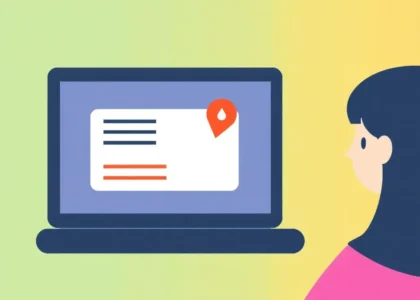Introduction: The Science Behind Search Behavior
Did you know that 55% of readers spend fewer than 15 seconds actively reading a webpage? In today’s fast-paced digital landscape, understanding how Google users interact with content is crucial for writers, marketers, and businesses.
This article dives deep into reader psychology, scanning patterns, and SEO best practices to help you create content that not only ranks but actually gets read. Whether you’re optimizing for informational queries like “how Google users read articles” or local searches like “Pueblo.us/jobs,”* these insights will transform your approach.
🔑 Key Takeaways: What Google Readers Want
Before we analyze the details, here’s what you need to know:
✔ Eye-tracking studies show an “F-shaped” reading pattern—users scan headlines, subheadings, and bullet points first.
✔ Featured snippets get 35% more clicks—structure content to answer questions directly.
✔ Local searches (e.g., “Pueblo.us/jobs”) demand hyper-relevant, concise information.
✔ Page speed impacts bounce rates—53% of mobile users abandon sites that take over 3 seconds to load.
✔ Engagement signals (time on page, scroll depth) affect rankings—make content skimmable but valuable.
Now, let’s break down the strategies to capture and retain Google readers.
1. The Psychology of Scanning: Why Readers Don’t Read Word-for-Word
Google users are task-driven. They arrive with a question and want answers fast. Here’s what research reveals:
-
NNGroup’s eyetracking studies confirm the “F-shaped” pattern: Users read horizontally (title), then vertically (subheadings/bullets), rarely finishing full paragraphs.
-
Mobile dominance: 60% of searches happen on phones, where small screens make dense text overwhelming.
-
Cognitive impatience: The average attention span is now 8 seconds—shorter than a goldfish’s (9 seconds).
How to Adapt:
✅ Front-load key info—Place the most important points in the first 100 words.
✅ Use descriptive subheadings (H2/H3)—Help scanners navigate (e.g., *”3 Ways to Optimize for Local Searches Like ‘Pueblo.us/jobs’”*).
✅ Highlight keywords in bold—Guide readers to critical takeaways.
2. What Makes Users Click? Decoding SERP Behavior
Your title tag and meta description are your first (and sometimes only) chance to hook readers.
A. Title Tags That Win Clicks
-
Include numbers or power words: “7 Proven Tactics to Keep Google Readers Engaged” outperforms vague titles.
-
Keep it under 60 characters to avoid truncation.
-
Match search intent: For “Pueblo.us/jobs,” a title like “How to Find & Apply for Pueblo.us Jobs (2024 Guide)” targets local job seekers.
B. Meta Descriptions That Convert
-
Use active language: “Discover how to land Pueblo.us jobs—application tips, deadlines, and insider advice.”
-
Include a call-to-action (CTA): “Learn more,” “Get the checklist,” etc.
-
Add your target keyword naturally (e.g., “how Google users read articles”).
3. How to Structure Content for Maximum Engagement
A. The “Inverted Pyramid” Approach
-
Lead with the conclusion (e.g., “To rank for ‘Pueblo.us/jobs,’ optimize for local keywords and mobile speed.”)
-
Support with details (stats, steps, examples).
-
End with actionable next steps (e.g., “Bookmark this Pueblo jobs portal for updates”).
B. Formatting for Skimmers
-
Short paragraphs (1–3 lines max).
-
Bullet points for lists (like this one!).
-
Visual breaks (images, dividers, white space).
C. Answer Questions Directly
Voice search and featured snippets prioritize concise, direct answers. Structure content as:
Q: “How do I apply for Pueblo.us jobs?”
A: “Visit Pueblo.us/jobs, filter by category, and submit your resume online.”
4. Local SEO: Winning “Pueblo.us/jobs” and Similar Queries
For location-based searches, readers want hyper-relevant, timely info. Optimize by:
-
Adding schema markup for job postings (helps Google display salaries, deadlines, etc.).
-
Embedding a Google Map if referencing physical locations.
-
Using local keywords naturally (e.g., “Pueblo County government jobs”).
5. Technical SEO: The Hidden Ranking Factors
Even great content won’t rank without:
A. Mobile Optimization
-
Google’s Mobile-First Index prioritizes mobile-friendly sites.
-
Test your page with Google’s Mobile-Friendly Tool.
B. Page Speed
-
Compress images (use WebP format).
-
Enable lazy loading.
C. Internal Linking
-
Link to related content (e.g., “For more job-search tips, read our guide to resume writing.”).
Visit our Website: Makeuser






